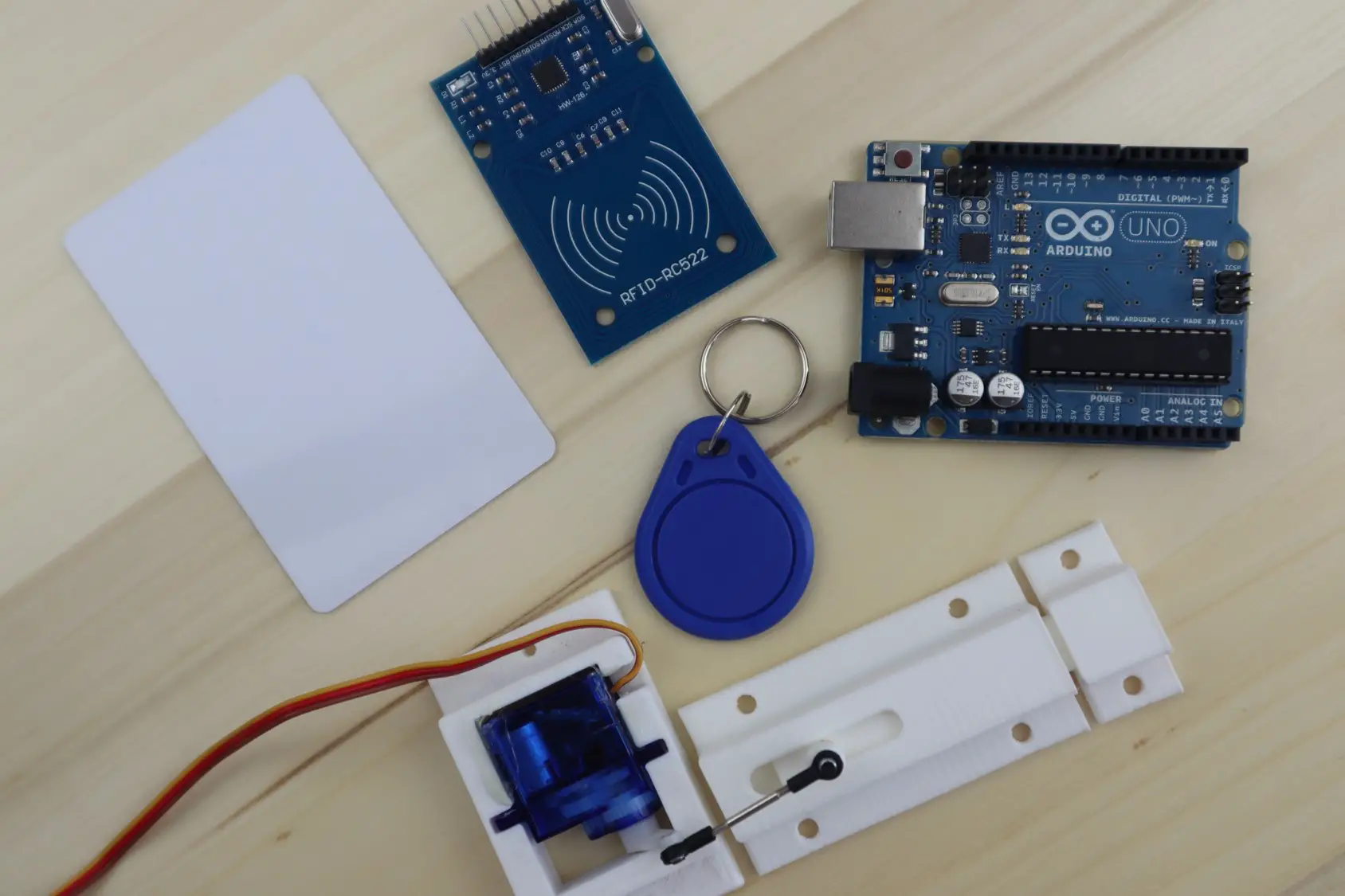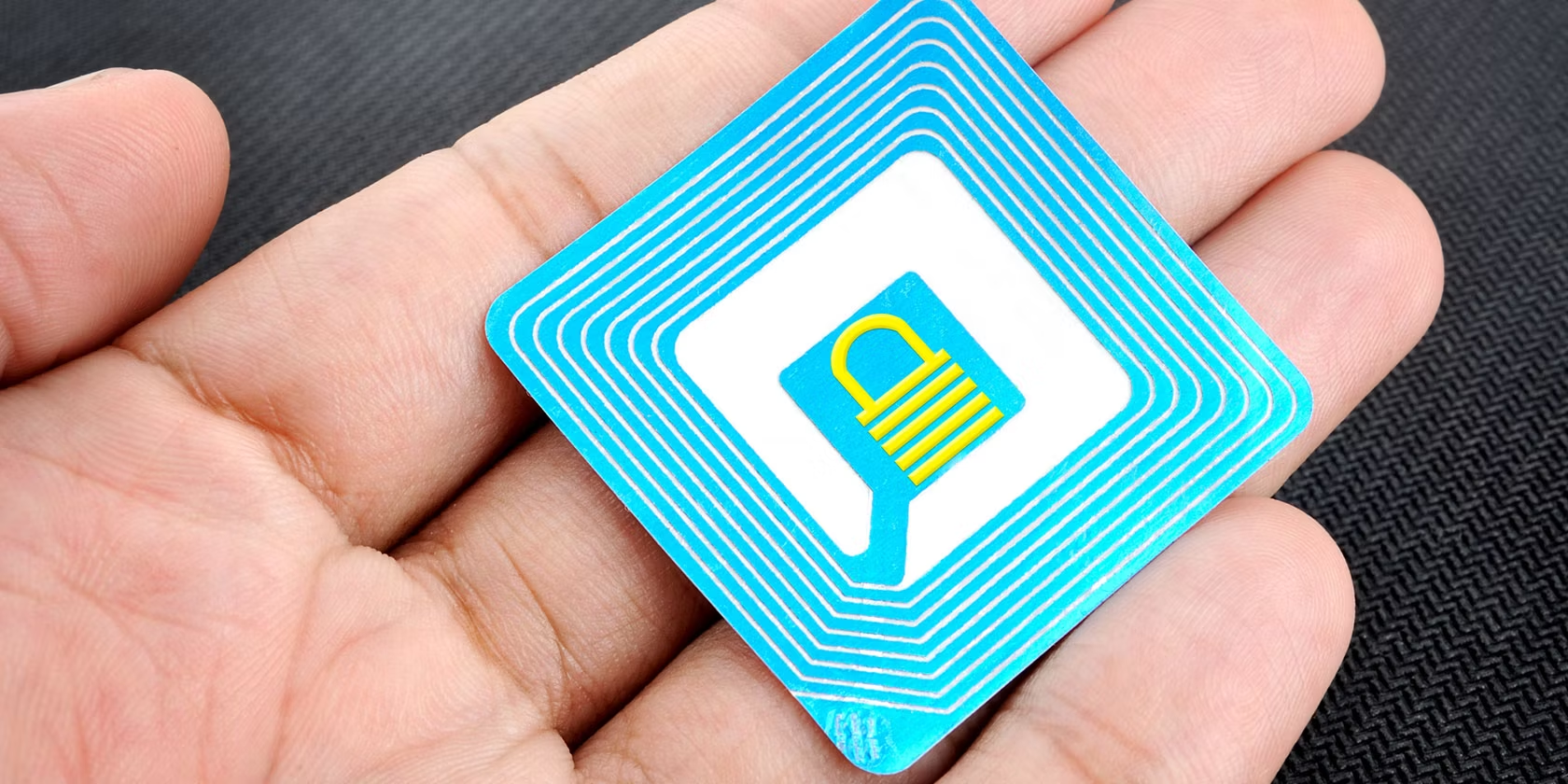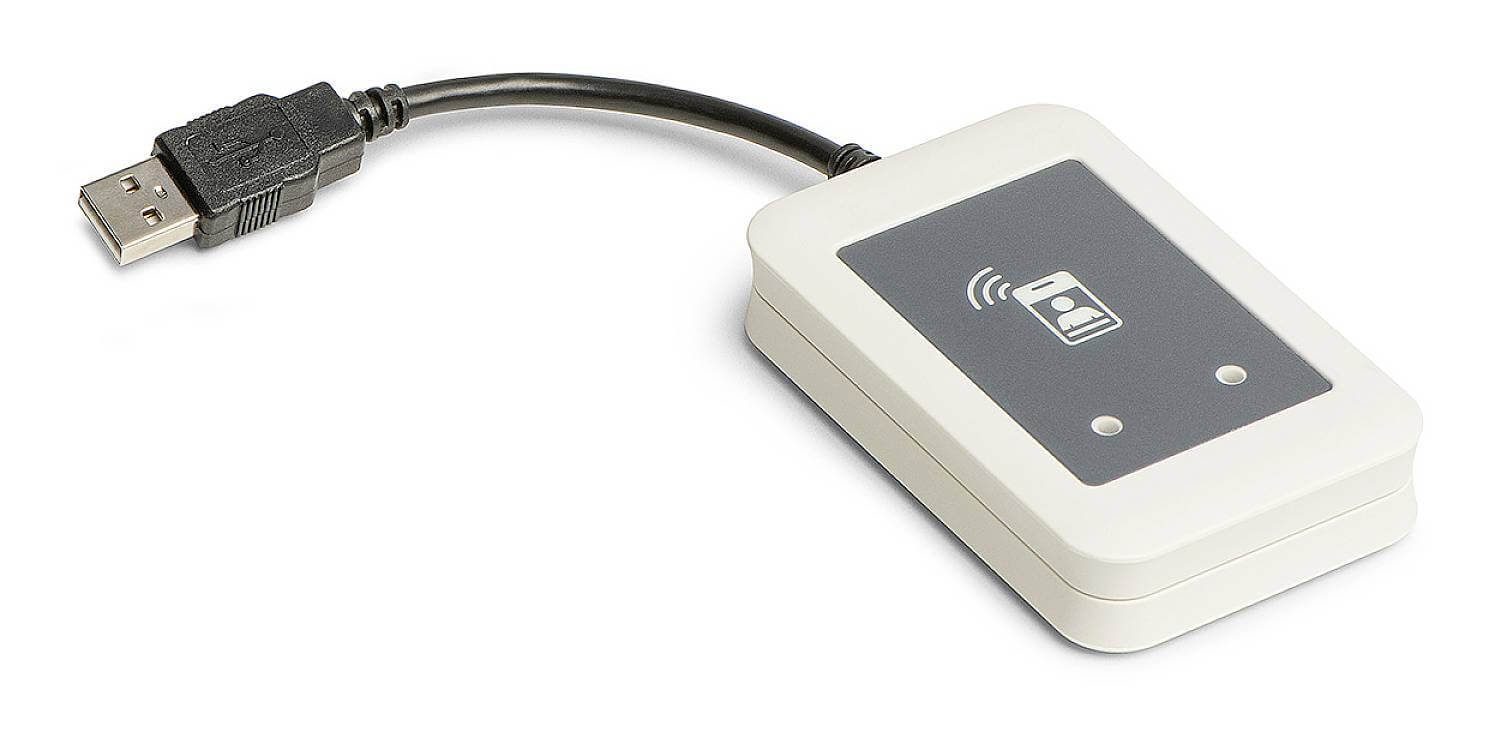Introduction
Advancements in technology have revolutionized various industries, and one such innovation is Radio Frequency Identification (RFID) technology. RFID is a wireless technology that uses electromagnetic fields to identify and track items, making it an essential tool for supply chain management, inventory control, and asset tracking.
With its ability to wirelessly transmit data over short distances, RFID has become increasingly popular in various sectors, including retail, healthcare, logistics, and transportation. However, as with any technology, there are concerns about the security of RFID systems and the potential risks they pose.
In this article, we will delve into the world of RFID technology and examine the security risks associated with its implementation. We will explore unauthorized access, eavesdropping, cloning and forgery, and denial of service attacks. Additionally, we will discuss the measures that can be taken to secure RFID systems, including the use of encryption algorithms, authentication protocols, and physical security measures.
Furthermore, we will address privacy concerns related to RFID technology, as it has the potential to track and monitor individuals and their activities. It is essential to strike a balance between reaping the benefits of RFID technology and safeguarding privacy and personal information.
By understanding the security risks and implementing appropriate measures, organizations can confidently adopt RFID technology while minimizing potential vulnerabilities. So, let us explore the exciting and intricate world of RFID technology and the steps needed to ensure its secure implementation.
What is RFID?
Radio Frequency Identification (RFID) is an automatic identification technology that uses electromagnetic fields to wirelessly transfer data between a tag or label attached to an object and a reader device. The tag or label, also known as an RFID transponder, contains a microchip and an antenna that enable it to communicate with the reader.
RFID technology operates on the principle of radio waves. When the RFID tag comes within range of the reader, the reader emits radio frequency signals, which power the tag and activate it. The tag then sends back the stored information to the reader, allowing for the identification and tracking of the object.
RFID systems can be divided into three main components:
- RFID Tag: This is the physical label or transponder that is attached to the object being tracked. The tag contains a unique identifier and may also store additional data, such as product information or manufacturing details. There are two types of RFID tags: active tags, which have their own power source and can transmit data over longer distances, and passive tags, which do not have a power source and rely on the energy from the reader to operate.
- RFID Reader: The reader, also known as an interrogator, is the device that communicates with the RFID tags and captures the transmitted data. It emits radio frequency signals and receives the information transmitted by the tags. The reader can be a handheld device or integrated into fixed infrastructure such as gates, shelves, or conveyor belts.
- RFID Middleware: The middleware is software that connects the RFID hardware components, including the tags and readers, with the enterprise application systems. It manages the flow of data between the RFID infrastructure and the business applications, enabling real-time monitoring and integration with existing systems.
RFID technology offers numerous benefits compared to traditional identification methods, such as barcode systems. It allows for contactless and automated data capture, reducing human error and improving efficiency. RFID tags can be read at a distance, even in challenging environments, such as warehouses or industrial settings. This makes RFID ideal for applications such as inventory management, asset tracking, supply chain optimization, and access control.
With its ability to provide real-time visibility, improve traceability, and streamline operations, RFID technology has gained widespread adoption across various industries. Understanding how RFID works and its potential applications sets the foundation for assessing the security risks associated with its implementation.
How does RFID work?
RFID technology relies on the communication between RFID tags and reader devices to perform various tasks, such as identification, tracking, and data capture. The process involves several steps that facilitate the transfer of data wirelessly.
The basic operation of an RFID system can be explained in the following steps:
- Tag Initialization: Each RFID tag is assigned a unique identifier, which can be a serial number or a code specific to the tagged item. Upon manufacturing, the tag is programmed with this unique identifier and other relevant data, depending on the application requirements.
- Reader Activation: The RFID reader emits radio frequency signals within a specific range. These signals power the passive RFID tags, enabling them to respond and transmit data. Active RFID tags have their own power source and are always ready to communicate with the reader.
- Tag Response: When a tag comes within range of the reader’s radio frequency signals, it detects the activation signal and responds by transmitting its stored data. This response can include the unique identifier, as well as any additional information programmed into the tag.
- Data Capture: The reader receives the transmitted data from the RFID tag. It decodes the information and processes it for further use or integration with other applications. The reader can capture data from multiple RFID tags simultaneously, making it possible to identify and track multiple objects in real-time.
RFID systems can operate in different frequency ranges, including low frequency (LF), high frequency (HF), and ultra-high frequency (UHF). The choice of frequency depends on factors such as read range requirements, environmental conditions, and the nature of the objects being tracked.
Low-frequency RFID systems typically operate at frequencies between 30 kHz and 300 kHz. They offer short read ranges and are suitable for applications where close proximity is required, such as access control or animal tracking.
High-frequency RFID systems operate at frequencies between 3 MHz and 30 MHz. They provide moderate read ranges and are commonly used in applications such as contactless payment systems, ticketing, and electronic passports.
Ultra-high-frequency RFID systems operate at frequencies between 300 MHz and 3 GHz, offering long read ranges. They are widely used in logistics, supply chain management, and inventory control, where the ability to read multiple tags from a distance is essential.
Overall, RFID technology enables seamless communication between tags and readers, allowing for efficient identification and tracking of objects. Understanding the working principles of RFID systems is crucial for assessing their security vulnerabilities and implementing appropriate measures to protect against potential risks.
Benefits of RFID technology
RFID technology offers a wide range of benefits for businesses and industries, revolutionizing the way they manage their operations and assets. Here are some significant advantages of RFID technology:
- Improved Efficiency: RFID enables automated and contactless data capture, eliminating the need for manual scanning or inputting data. This leads to significant time savings and reduces human error, enhancing overall operational efficiency.
- Real-time Visibility: With RFID, businesses can have real-time visibility of their inventory, assets, and supply chain. The ability to track and monitor items throughout the entire process enables better planning, optimization of resources, and faster decision-making.
- Streamlined Inventory Management: RFID enables accurate and efficient inventory management. It provides real-time stock updates, automates reordering processes, minimizes stockouts, and reduces the need for manual inventory counts.
- Enhanced Supply Chain Management: RFID enables seamless tracking and monitoring of goods in the supply chain. It improves traceability, reduces loss and theft, minimizes errors in shipping and receiving processes, and facilitates efficient logistics and warehouse operations.
- Increased Productivity: RFID technology eliminates the need for manual data entry, allowing employees to focus on more value-added tasks. It speeds up processes such as check-in/check-out, authentication, and asset management, leading to increased productivity.
- Better Customer Service: RFID enables faster and more accurate identification of products, leading to improved customer service. It enables retailers to quickly locate items, ensure availability, and provide personalized shopping experiences through targeted promotions and recommendations.
- Enhanced Security and Anti-counterfeiting: RFID tags can be embedded with security features, such as encryption and authentication protocols, making it difficult for counterfeiters to replicate or tamper with the tags. This helps protect products from counterfeiting and ensures the authenticity of goods.
- Reduced Labor Costs: RFID automation reduces the need for manual labor in various processes, such as inventory management, asset tracking, and authentication. With less reliance on manual labor, businesses can save on staffing costs and allocate resources more efficiently.
These benefits make RFID technology a valuable tool for businesses looking to improve efficiency, productivity, and visibility in their operations. However, it is essential to be aware of the security risks associated with RFID technology and take appropriate measures to safeguard against potential vulnerabilities.
Security risks of RFID technology
While RFID technology offers numerous benefits, it also introduces security risks that need to be addressed and mitigated. Understanding these risks is crucial for organizations to implement appropriate security measures. Here are some of the common security risks associated with RFID technology:
- Unauthorized access: One of the primary concerns with RFID technology is the potential for unauthorized access to sensitive data. If proper authentication and encryption protocols are not in place, malicious individuals can intercept and access RFID transmissions, compromising the confidentiality of the data.
- Eavesdropping: RFID signals can be intercepted by unauthorized individuals, allowing them to eavesdrop on the communication between tags and readers. This can lead to the theft of sensitive information, such as personal data or intellectual property.
- Cloning and forgery: RFID tags can be cloned or forged if proper security measures are not implemented. Attackers can create counterfeit tags or manipulate the data stored on legitimate tags, leading to the unauthorized replication or modification of tagged items.
- Denial-of-service attacks: RFID systems can be subjected to denial-of-service attacks, where malicious individuals disrupt the functioning of the system by jamming or interfering with the RFID signals. This can lead to disruptions in operations and loss of data.
These security risks highlight the importance of implementing robust security measures in RFID systems to protect against potential vulnerabilities. Organizations should take proactive steps to ensure the security and integrity of their RFID deployments.
It is crucial to address these security risks by implementing the following measures:
- Strong encryption algorithms: Implementing strong encryption protocols ensures that the data transmitted between RFID tags and readers is secure and cannot be easily intercepted or decoded by unauthorized parties.
- Authentication protocols: Implementing authentication mechanisms, such as unique identification codes or digital certificates, helps verify the legitimacy of RFID tags and ensures that only authorized tags can communicate with the reader.
- Physical security measures: Protecting physical access to RFID systems is essential. This can involve securing the physical infrastructure, such as readers and antennas, as well as properly managing the distribution and disposal of RFID tags.
By implementing these security measures, organizations can reduce the risks associated with RFID technology and safeguard their assets, data, and operations.
Unauthorized access
One significant security risk associated with RFID technology is the potential for unauthorized access to sensitive data. Without proper security measures in place, malicious individuals can intercept and access RFID transmissions, compromising the confidentiality of the data being transmitted.
Unauthorized access can occur at various stages of the RFID communication process. Attackers may attempt to intercept the signals between the RFID tags and readers, gaining access to the data being transmitted. They can also target the backend systems that process and store the RFID data.
There are several methods that attackers can use to gain unauthorized access to RFID systems:
- Eavesdropping: Eavesdropping involves the interception and monitoring of the RFID signals between tags and readers. Attackers can use specialized equipment to capture these signals and extract the transmitted data. This can lead to the theft of sensitive information or enable attackers to replicate or manipulate the RFID tags for malicious purposes.
- Tag cloning: Attackers may attempt to clone legitimate RFID tags to gain unauthorized access. By duplicating the unique identifier and data stored on an authorized tag, they can create counterfeit tags that appear legitimate to the reader. This allows them to bypass security measures and gain unauthorized access to restricted areas or systems.
- Eavesdropping on backend systems: In addition to intercepting RFID signals, attackers may also target the backend systems that process and store the RFID data. By exploiting vulnerabilities in these systems, they can gain unauthorized access to sensitive information and compromise the integrity of the system.
To mitigate the risk of unauthorized access, it is crucial to implement robust security measures at both the hardware and software levels. Some measures that can be taken include:
- Encryption: Implementing strong encryption algorithms ensures that the RFID data transmitted between tags and readers is secure and cannot be easily intercepted or decrypted by unauthorized parties.
- Authentication: Implementing authentication mechanisms, such as mutual authentication between tags and readers, helps verify the legitimacy of the RFID devices. This ensures that only authorized devices can communicate with each other and access sensitive data.
- Access controls: Implementing access control policies and restrictions helps limit access to RFID systems. This includes controlling physical access to the readers and ensuring that only authorized personnel have the necessary privileges to interact with the system.
- Monitoring and auditing: Regular monitoring and auditing of RFID system activities can help detect unauthorized access attempts or anomalies. This allows for timely response and mitigation of potential security breaches.
By implementing these security measures, organizations can significantly reduce the risk of unauthorized access to their RFID systems and protect the confidentiality, integrity, and availability of their data.
Eavesdropping
Eavesdropping is a significant security risk associated with RFID technology, where unauthorized individuals intercept and monitor the communication between RFID tags and readers. By capturing and analyzing the transmitted data, attackers can gain access to sensitive information or track the movements of tagged items without detection.
Eavesdropping can occur in different scenarios and at various stages of the RFID communication process. Attackers can deploy specialized equipment to intercept the radio frequency (RF) signals emitted by RFID tags and readers, allowing them to capture the data being transmitted.
There are several methods attackers can use to eavesdrop on RFID systems:
- RFID signal interception: Attackers may physically position themselves within the range of the RFID signal to intercept the communication between the tag and reader. This can be done by using specialized RF receivers or by modifying off-the-shelf RFID equipment to capture and decode the signals.
- Signal amplification: Attackers can use signal amplification techniques to extend the read range of RFID tags. By amplifying the weak signals, they can increase the chances of intercepting the transmitted data from a greater distance. This method is particularly effective in situations where tags are intentionally designed to have limited range for privacy reasons.
- Signal jamming: Attackers may deploy jamming devices that emit strong RF signals to disrupt the communication between RFID tags and readers. By overpowering or blocking the RFID signals, they can prevent the tags from communicating with the reader, effectively rendering the system ineffective.
- Battery-powered sniffer tags: Attackers can insert battery-powered sniffer tags covertly into the vicinity of RFID systems. These sniffer tags can passively capture tag-reader communication and store the intercepted data for later analysis. The attacker can then retrieve the sniffer tags to extract the captured data.
To mitigate the risk of eavesdropping, organizations should implement strong security measures, including:
- Encryption: Implementing encryption mechanisms ensures that the data transmitted between the tag and reader is secure and cannot be easily decrypted by unauthorized individuals. Encryption helps protect the confidentiality of the data even if it is intercepted during transmission.
- Authentication: Implementing mutual authentication between the tag and reader helps verify the legitimacy of the devices involved in the RFID communication. This ensures that only authorized devices can establish communication and exchange data.
- RF shielding: Physical measures such as using RF shielding materials or enclosures can help prevent eavesdropping by blocking or attenuating the RF signals emitted by RFID tags and readers. This can limit the range at which the signals can be intercepted, making it harder for attackers to capture the transmitted data.
- Monitoring and anomaly detection: Regular monitoring of RFID system activities can help detect abnormal patterns or unauthorized access attempts. Implementing anomaly detection mechanisms can provide an early warning of potential eavesdropping activities and allow for prompt response and remediation.
By implementing these security measures, organizations can enhance the confidentiality and integrity of their RFID systems, minimizing the risk of eavesdropping and protecting sensitive information from unauthorized access.
Cloning and forgery
Cloning and forgery are significant security risks associated with RFID technology, where attackers attempt to replicate or manipulate RFID tags for unauthorized access or malicious purposes. By cloning legitimate tags or forging the data stored on them, attackers can gain unauthorized access to restricted areas, tamper with tracking information, or counterfeit goods.
There are several methods that attackers can employ to clone or forge RFID tags:
- Tag duplication: Attackers may attempt to physically clone the RFID tags to create counterfeit copies. By extracting and replicating the unique identifier and data stored on the original tag, they can produce tags that appear identical and legitimate to the reader. This enables them to bypass security measures and gain unauthorized access to secured areas or systems.
- Data manipulation: Attackers may tamper with the data stored on legitimate tags to alter information or misrepresent the properties of the tagged items. This can allow them to deceive the reader and gain unauthorized privileges or manipulate tracking information for malicious purposes.
- Tag emulation: Attackers can create emulated tags that mimic the behavior of legitimate RFID tags. These emulated tags may not have the same unique identifier as the original tags but can still manipulate the reader into treating them as valid. This technique allows attackers to gain unauthorized access or disrupt the normal functioning of the RFID system.
To mitigate the risk of cloning and forgery, organizations can implement the following security measures:
- Authentication: Implementing strong authentication mechanisms between the RFID tag and reader can help verify the legitimacy of the tags. This ensures that only authorized tags can establish communication with the reader, preventing the acceptance of cloned or forged tags.
- Tamper-evident tags: Using tamper-evident tags can provide a visual indication if a tag has been tampered with. These tags are designed to show visible signs of tampering, such as a broken seal or color change, making it more difficult for attackers to clone or manipulate the tags without detection.
- Secure storage and distribution: Safeguarding the storage and distribution of RFID tags is essential to prevent unauthorized access and manipulation. Implementing secure supply chain practices, such as ensuring the integrity of tag manufacturing and distribution processes, helps minimize the risk of counterfeiting or tampering.
- Data encryption: Encrypting the data stored on RFID tags helps protect the integrity and confidentiality of the information. By using strong encryption algorithms, attackers will find it challenging to modify or forge the data on legitimate tags.
Additionally, regular audits and monitoring of RFID system activities can help detect and mitigate any cloned or forged tags. Any suspicious activity or anomalies should be promptly investigated and addressed to ensure the integrity and security of the RFID system.
By implementing these security measures, organizations can significantly reduce the risk of cloning and forgery, ensuring the authenticity and reliability of their RFID systems.
Denial of service attacks
Denial of Service (DoS) attacks pose a significant security risk to RFID technology, where malicious individuals or entities intentionally disrupt the normal functioning of the RFID system. By targeting the system with excessive traffic or exploiting vulnerabilities, attackers can render the RFID system unavailable or degrade its performance, adversely affecting its operations.
There are several methods that attackers can employ to carry out DoS attacks on RFID systems:
- RFID signal jamming: Attackers can use specialized jamming devices to flood the RFID system with excessive RF signals, disrupting the communication between the tags and readers. By overpowering or blocking the RFID signals, they can prevent the tags from communicating with the reader and render the system inaccessible.
- Interference with reader operations: Attackers may target the reader devices to disrupt their operations and prevent them from functioning correctly. This can involve exploiting vulnerabilities in the reader software, tampering with the hardware, or physically damaging the readers.
- Network-based attacks: Attackers may exploit vulnerabilities in the network infrastructure or the backend systems that support the RFID system. By flooding the network with excessive traffic or exploiting weaknesses in the system, they can overload the network and bring the RFID system to a halt.
- Battery depletion attacks: In the case of battery-powered RFID tags, attackers can target the power source to drain or deplete the tag’s battery, rendering it inactive. This can significantly impact the functionality of the RFID system and disrupt its operations.
To mitigate the risk of DoS attacks, organizations can implement the following security measures:
- Physical security: Implementing physical security measures, such as protecting the RFID infrastructure from tampering, unauthorized access, or physical damage, helps minimize the risk of DoS attacks. This includes securing reader devices, deploying surveillance systems, and restricting physical access to critical components of the system.
- Network segmentation: Segregating the RFID system from the corporate network infrastructure can help contain and mitigate the impact of DoS attacks. By isolating the RFID system, any attack targeting the RFID system will have minimal impact on other critical network activities.
- Redundancy and backup systems: Implementing redundant systems and backup infrastructure helps ensure the availability of the RFID system. By having duplicate reader devices, backup power sources, or failover mechanisms, organizations can quickly recover from DoS attacks and maintain uninterrupted operations.
- Network monitoring and traffic analysis: Regular monitoring and analysis of the network traffic can help detect signs of potential DoS attacks. Implementing traffic anomaly detection mechanisms and intrusion detection systems enables organizations to identify suspicious patterns and take timely action to mitigate the impact of DoS attacks.
By implementing these security measures, organizations can significantly reduce the risk of DoS attacks and ensure the availability and reliability of their RFID systems even in the face of potential disruptions.
Measures to secure RFID systems
To protect against security risks, organizations must implement robust security measures to secure their RFID systems. By incorporating appropriate safeguards, they can ensure the confidentiality, integrity, and availability of data and prevent unauthorized access or manipulation. Here are some key measures to secure RFID systems:
- Strong encryption algorithms: Implementing strong encryption protocols ensures that the data transmitted between RFID tags and readers is secure and cannot be easily intercepted or decoded by unauthorized parties. Encryption protects against eavesdropping and data tampering.
- Authentication protocols: Implementing authentication mechanisms, such as mutual authentication between tags and readers, helps verify the legitimacy of the RFID devices. This ensures that only authorized devices can communicate with each other and access sensitive data.
- Physical security measures: Protecting physical access to RFID systems is crucial. This involves securing the physical infrastructure, such as readers and antennas, to prevent tampering or unauthorized access. Additionally, controlling the distribution of RFID tags and ensuring proper disposal measures are in place helps prevent cloning or misuse.
- Tamper-evident tags: Using tamper-evident RFID tags provides a visual indication if a tag has been tampered with. Any attempt to manipulate or clone the tag is immediately noticeable, enhancing the security and integrity of the RFID system.
- Access controls: Implementing access control policies and restrictions helps limit access to RFID systems. This includes controlling physical access to the readers and ensuring that only authorized personnel have the necessary privileges to interact with the system. Strong authentication mechanisms, such as PIN codes or biometrics, can be implemented to authenticate user access.
- Monitoring and auditing: Regular monitoring of RFID system activities helps detect and respond to any potential security breaches. Implementing auditing mechanisms allows organizations to track and review system logs, ensuring compliance with security policies and identifying any suspicious activities or anomalies.
- Supplier and vendor security: Organizations should select reputable suppliers and vendors for their RFID systems. Conducting due diligence on the security practices of suppliers and ensuring they comply with industry standards can help minimize the risk of compromised or vulnerable systems.
- Employee awareness and training: Educating employees about the security risks associated with RFID systems and providing training on best practices helps foster a culture of security. Employees should be aware of their responsibilities regarding data security, including proper handling of RFID tags and understanding the potential consequences of unauthorized access or breaches.
- Regular updates and patches: Keeping RFID systems up to date with the latest software patches and firmware updates is essential to address any identified vulnerabilities or security loopholes. Regular updates help mitigate the risk of exploitation by attackers.
By implementing these security measures, organizations can significantly enhance the security posture of their RFID systems and minimize the potential risks associated with unauthorized access, data breaches, or system disruptions.
Strong encryption algorithms
Implementing strong encryption algorithms is a crucial measure to secure RFID systems. Encryption plays a vital role in protecting the confidentiality and integrity of the data transmitted between RFID tags and readers, ensuring that it cannot be easily intercepted or decoded by unauthorized parties.
Strong encryption algorithms use complex mathematical calculations to convert plaintext data into ciphertext, making it unreadable and unintelligible to anyone without the proper decryption key. By encrypting the data stored on RFID tags and the data transmitted during communication, organizations can prevent eavesdropping and unauthorized access to sensitive information.
There are several encryption algorithms commonly used in RFID systems, including:
- Advanced Encryption Standard (AES): AES is a widely recognized and secure encryption algorithm used in various industries. It provides strong encryption and has been adopted as the standard by the U.S. government. AES is known for its efficiency and robustness in securing data.
- Rivest Cipher (RC): RC algorithms, such as RC4 and RC5, are widely used in wireless communication and RFID systems. They offer fast encryption and decryption speeds, making them suitable for resource-constrained devices like RFID tags. However, it is important to note that some RC algorithms, like RC4, have been found to be vulnerable to certain attacks and should be used with caution.
- Data Encryption Standard (DES): Although now considered less secure due to its relatively short key length, DES was widely used in the past and may still be encountered in legacy systems. Organizations should be cautious when using DES and consider migrating to more secure encryption algorithms.
- Triple Data Encryption Standard (3DES): 3DES provides enhanced security by applying the DES algorithm three times in succession. It mitigates some of the vulnerabilities of DES and increases the key length, making it more resistant to brute force attacks.
- Elliptic Curve Cryptography (ECC): ECC is a modern and efficient encryption technique used in RFID systems. It offers strong encryption with shorter key lengths compared to other algorithms. ECC is particularly beneficial for resource-constrained devices like RFID tags, as it requires less computational power and memory.
When implementing encryption in RFID systems, it is important to consider factors such as the computational capabilities of the RFID tags, the processing power of the reader, and the overall system requirements. The selected encryption algorithm should strike a balance between security and the performance limitations of the RFID system.
In addition to selecting a strong encryption algorithm, organizations should also consider secure key management practices. Maintaining the confidentiality and integrity of encryption keys is essential to prevent unauthorized access to the encrypted data.
It is worth noting that encryption alone is not a comprehensive security solution. It should be implemented in conjunction with other security measures, such as authentication protocols, access controls, and physical security, for a layered approach to RFID system security.
By implementing strong encryption algorithms and following best practices for key management, organizations can significantly enhance the security of their RFID systems, protecting sensitive data from unauthorized access and ensuring the integrity of their operations.
Authentication protocols
Implementing robust authentication protocols is a critical measure to enhance the security of RFID systems. Authentication helps verify the legitimacy of RFID tags and readers and ensures that only authorized devices can communicate with each other, preventing unauthorized access and manipulation of data.
Authentication protocols involve a challenge-response mechanism between the RFID tag and the reader, where the tag is required to prove its identity to the reader. This process typically involves the use of cryptographic algorithms and keys. There are several authentication protocols commonly used in RFID systems:
- Basic Access Control (BAC): BAC is a widely used authentication protocol in ePassports and other contactless identification cards. It uses a shared secret key between the tag and the reader to verify the authenticity of the tag. BAC provides a simple and efficient means of authentication.
- Mutual Authentication: Mutual authentication is a two-way authentication process between the tag and the reader. Both entities authenticate each other by exchanging challenge-response messages, ensuring that they are legitimate. This protocol prevents unauthorized devices from gaining access to the system and ensures secure communication.
- Challenge-response protocols: Challenge-response protocols involve the reader issuing a challenge to the tag, which responds with a calculated response based on its embedded cryptographic keys. The reader then verifies the response to authenticate the tag. This protocol is often used in secure contactless payment systems and access control applications.
- Public Key Infrastructure (PKI): PKI-based authentication protocols use digital certificates and public-private key pairs to establish trust between the tag and the reader. This enables secure and authenticated communication. PKI is commonly used in scenarios where a high level of security is required, such as in government applications or high-value asset tracking.
- Challenge Handshake Authentication Protocol (CHAP): CHAP is a protocol commonly used in RFID systems to authenticate tags and prevent replay attacks. It involves a series of challenges and responses to ensure the integrity of the communication and protect against unauthorized access.
Implementing an appropriate authentication protocol depends on the specific requirements and security considerations of the RFID system. It is important to select protocols that provide an appropriate level of security while considering factors such as computational capabilities, memory constraints, and the overall system architecture.
In addition to authentication protocols, secure key management practices are fundamental for maintaining the integrity and confidentiality of the cryptographic keys used in the authentication process. This includes secure storage and distribution of keys, key rotation, and protection against key compromise.
By implementing strong authentication protocols and sound key management practices, organizations can significantly enhance the security of their RFID systems. Authentication ensures the integrity and legitimacy of device communication, preventing unauthorized access and safeguarding sensitive data.
Physical security measures
Protecting the physical components of RFID systems is essential for maintaining the security and integrity of the technology. Physical security measures help ensure that RFID readers, antennas, and tags are safeguarded from tampering, unauthorized access, or physical damage.
Here are some key physical security measures to consider for RFID systems:
- Securing the physical infrastructure: Controlling physical access to RFID infrastructure is a crucial step in ensuring system security. This may involve implementing physical barriers, such as fences or locked cabinets, to protect the readers and antennas from unauthorized tampering or removal. Access to critical components should be restricted to authorized personnel only.
- Video surveillance: Deploying video surveillance systems can help monitor and record activities around the RFID infrastructure. Security cameras can act as a deterrent and provide visual evidence in case of security incidents or breaches.
- Environmental controls: Proper environmental controls, such as temperature and humidity monitoring, help ensure that RFID equipment operates optimally. RFID tags and readers may have specific operating conditions, and deviations from these conditions can impact their performance and reliability.
- Secure tag distribution: When deploying RFID systems, it is crucial to have secure practices for distributing tags. This includes managing the inventory of tags, maintaining a record of distributed tags, and ensuring that tags are securely stored until deployment. Proper tag distribution helps prevent unauthorized use and counterfeit tags.
- Secure tag disposal: When retiring or decommissioning RFID tags, proper disposal practices are crucial. Erasing or physically destroying tags ensures that sensitive information stored on them cannot be compromised. Organizations should have clear protocols for secure tag disposal to prevent potential data breaches.
- Physical authentication mechanisms: Physical authentication mechanisms, such as tamper-evident tags or seals, can provide visual indications of tampering or unauthorized access. These mechanisms make it easier to detect any attempts to compromise the integrity of the RFID system.
- Employee awareness and training: Educating employees about the importance of physical security and providing training on best practices helps create a culture of security. Employees should be aware of their responsibility to protect the physical infrastructure and report any suspicious activities promptly.
- Supply chain security: Implementing secure supply chain practices reduces the risk of compromised or tampered RFID equipment. Organizations should carefully vet suppliers and vendors to ensure the trustworthiness and integrity of the components used in the RFID system.
By implementing robust physical security measures, organizations can prevent unauthorized access, protect against tampering or theft, and ensure the reliable operation of their RFID systems. A comprehensive approach that includes physical security, surveillance, secure distribution practices, and employee training helps safeguard the physical components of the RFID infrastructure and the data they transmit and store.
Privacy concerns with RFID technology
While RFID technology offers numerous benefits, it also raises concerns regarding privacy, as it has the potential to track and monitor individuals and their activities. The ability of RFID systems to collect and store data on tagged items, including personal information, raises privacy implications that need to be carefully addressed.
Here are some key privacy concerns associated with RFID technology:
- Tracking and monitoring: RFID tags can be embedded in various items, including consumer products, identification cards, or even everyday objects. This raises concerns about continuous tracking and monitoring of individuals’ activities, leading to potential infringements on personal privacy rights.
- Data breach and unauthorized access: Storing personal information on RFID tags or in backend databases creates the risk of data breaches and unauthorized access. If proper security measures are not implemented, malicious individuals could gain access to sensitive data, leading to identity theft or other privacy violations.
- Profiling and targeted marketing: RFID systems have the potential to collect vast amounts of data on individuals’ preferences, habits, and behavior. This data can be used for targeted marketing or profiling purposes, potentially infringing on individuals’ privacy rights by creating a comprehensive profile without their consent or knowledge.
- Location tracking: RFID technology can enable real-time tracking of tagged items, including assets or individuals. This raises concerns about the unauthorized tracking of individuals’ movements and whereabouts, which can infringe upon personal privacy or civil liberties.
- Secondary use of data: There is a concern that RFID data collected for one specific purpose can be repurposed or shared without individuals’ consent. For example, data collected for inventory or supply chain management could be used for other purposes, such as marketing or surveillance, without the individual’s knowledge or permission.
To address these privacy concerns, it is important to implement privacy-enhancing measures when deploying RFID systems:
- Data minimization: Collect and store only the necessary data and ensure that it is securely managed and protected. Limiting the amount and duration of data retention reduces the risks associated with unauthorized access or use.
- Notice and consent: Inform individuals about the presence and purpose of RFID systems and obtain explicit consent for data collection and use. Clearly communicate how the collected data will be used, who will have access to it, and provide individuals with the right to opt-out or request data deletion.
- Anonymization and encryption: Anonymize or pseudonomize collected data whenever possible to protect individuals’ identities. Implement strong encryption measures to secure data in transit and at rest, reducing the risk of unauthorized access or exposure.
- Access controls: Implement access controls and authentication mechanisms to ensure that only authorized individuals have access to the collected data. This helps prevent data breaches and unauthorized use of personal information.
- Privacy impact assessments: Conduct privacy impact assessments to identify potential privacy risks throughout the lifecycle of the RFID system. This evaluation helps identify and address any privacy concerns early on, ensuring compliance with privacy regulations and best practices.
By implementing these privacy-enhancing measures, organizations can address privacy concerns associated with RFID technology while reaping the benefits of the technology in a responsible and ethical manner.
Conclusion
RFID technology offers significant advantages in terms of efficiency, visibility, and automation in various industries. However, it is crucial to address the security and privacy risks associated with its implementation. Understanding the potential vulnerabilities and implementing appropriate measures is essential to ensure the secure and responsible use of RFID systems.
Throughout this article, we have explored the various security risks of RFID technology, including unauthorized access, eavesdropping, cloning and forgery, and denial of service attacks. We have also discussed the importance of implementing measures such as strong encryption algorithms, authentication protocols, physical security measures, and privacy-enhancing practices to mitigate these risks.
Securing RFID systems requires a multi-layered approach that considers both the technical aspects and the physical protection of the infrastructure. Encryption and authentication protocols provide protection for data in transit and ensure the legitimacy of devices in the system. Physical security measures safeguard the RFID infrastructure from tampering, unauthorized access, and physical damage.
Privacy concerns also need to be carefully addressed. Implementing data minimization, obtaining consent, ensuring anonymization, and conducting privacy impact assessments help protect individuals’ privacy rights and maintain their trust in the proper use of their data.
By implementing these security and privacy measures, organizations can achieve a balance between reaping the benefits of RFID technology and ensuring the protection of sensitive information. It is crucial to regularly assess and adapt security measures to address emerging threats and technological advancements.
Overall, the secure implementation of RFID technology is a continued effort that requires collaboration between organizations, stakeholders, and technology providers. By staying vigilant and proactive in addressing security and privacy concerns, we can harness the full potential of RFID technology while ensuring the protection of data and maintaining the trust of individuals and businesses alike.

























